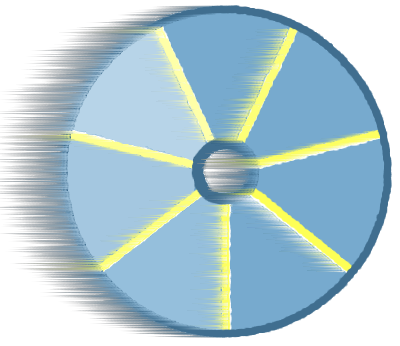How We Got Here: A Timeline of Hwy 1 Expansion & Community Opposition

1990’s
The Regional Transportation Commission (RTC) and Caltrans develop plans for High Occupancy Vehicle (HOV) Lanes and Auxiliary Lanes, effectively doubling the size of Hwy 1 between Santa Cruz and Freedom Blvd.
2002
The Campaign for Sensible Transportation was formed to oppose highway expansion (The name was changed in 2017 to Campaign for Sustainable Transportation)
2004
RTC sponsors Measure J to allocate 65% of its sales tax proceeds to the HOV project. Measure J needed a two-thirds vote to pass and received just 43% of the vote. CFST campaigned against the measure.
2010
CFST filed a lawsuit to invalidate the EIR for the auxiliary lanes from Morrissey Blvd to Soquel Dr. The Superior Court ruled against CFST. The auxiliary lane is now heavily congested during the afternoon commute. (see above photo)
2013
Governor Brown signs legislation proposed by Santa Cruz METRO & Monterey-Salinas Transit to allow bus-on-shoulder on Hwy 1, defined as bus-only lanes.
2015
The Draft EIR for the HOV Lane Project was published. There is no mention of bus-on-shoulder in the entire document. In addition to analyzing the HOV Lanes, it analyzed the TSM Alternative, defined as auxiliary lanes and ramp metering from Soquel Dr. to Freedom Blvd. Findings of the Draft EIR included:
“[The TSM Alternative] would result in a very slight improvement in traffic congestion when compared to the No Build Alternative”
“[The TSM Alternative] would not achieve sufficient congestion relief to attract any substantial number of vehicles that had diverted to the local street system back to the freeway.
“The total accident rates overall and by segment in 2035 under the TSM Alternative would be the same as the accident rates for the No Build Alternative.”
This EIR also analyzed a portion of the TSM Alternative: the construction of auxiliary lanes between Soquel Dr. and 41st Ave. (currently under construction). The EIR stated: “the auxiliary lane alternative would slightly worsen traffic operations in the southbound peak commute hour”.
The RTC never put discussion of the Draft EIR on their agenda.
2016
In spite of the EIR’s finding of poor performance for the auxiliary lanes, the RTC proposed that a sales tax ballot measure include $100 million for 4 miles of auxiliary lanes from Soquel Dr. to State Park Dr. The RTC spent over $100,000 on a mailer to all voters in the county, claiming that the sales tax measure will “ease congestion on Highway 1”. This message was inconsistent with the EIR’s findings of “very slight improvement”. Measure D passes.
2018
The RTC votes to amend the voter-approved Measure D Expenditure Plan to allocate funds to the State Park Dr. to Freedom Blvd Auxiliary Lane Project
2018
The Unified Corridors Investment Study, commissioned by the RTC finds: “Full implementation of HOV lanes on Highway 1 will require seeking a significant level of funding at a time when state and federal funding for highway capacity increasing projects is extremely limited and therefore will not likely be implemented until after 2035.”
2018
Monterey Bay Area Feasibility Study of Bus on Shoulder Operations is published. The study failed to consider bus-only lanes in lieu of auxiliary lanes. Instead it considers operating buses in auxiliary lanes mixed with traffic (not a true bus-on-shoulder operation).
2019
Final EIR for the HOV Lane Project is published. CFST and the Sierra Club file suit against Caltrans.
2022
Sacramento Superior Court finds that the HOV Lane EIR is invalid. The judge allowed the Soquel to 41st auxiliary lane to move forward. Caltrans pays the legal fees for CFST and Sierra Club.
2023
Caltrans publishes the Draft EIR for the State Park Dr. to Freedom Blvd Auxiliary Lanes. Former RTC Executive Director Linda Wilshusen submitted comments on the Draft: “Although the EIR/EA states that ‘The project would improve travel times and reduce traffic delay on State Route 1 [and] the Bus-on-Shoulder feature would increase the use of public transit…’, the data in the DEIR/EA itself demonstrates no sustained traffic-relief benefit from this Project. The Project does not accomplish the stated Purpose and Need.” The RTC never put discussion of the Draft EIR on their agenda.
2024
Caltrans published the Final EIR for the State Park to Freedom Aux Lanes. To date the RTC has not put discussion of the Final EIR on their agenda.
